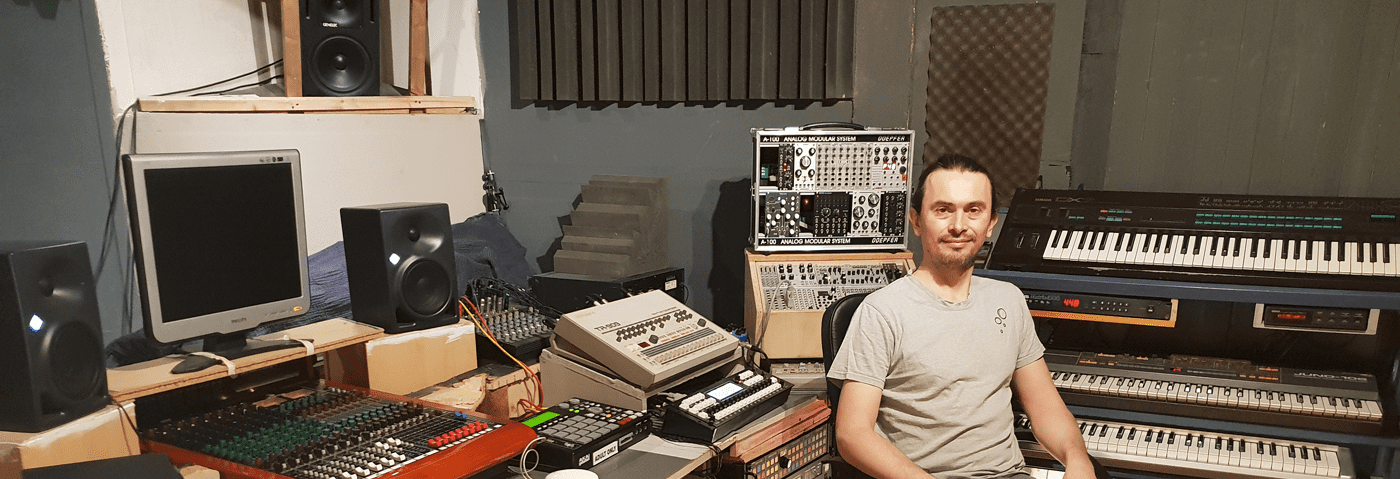Chris Carrier shows us around his studio including vintage synths, racks, an awesome modular set-up and more…
If you want to learn more about modular synthesis check out our New Series.
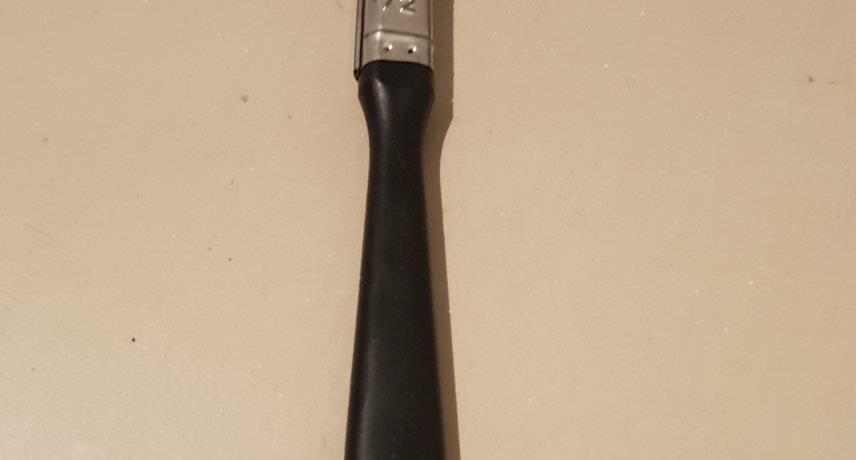
Studio Brush
In a studio the number one enemy is dust.
It’s difficult to remove it between the mixer buttons and others, so the best solution is the brush. One day I went to a birthday at a friend’s house who was not a painter. He had a brush placed near these machines that were incredibly clean. I was intrigued and he told me that he used the brush – a very simple tip that I’d never thought of and now I always have one. Thanks again to him…!
Related
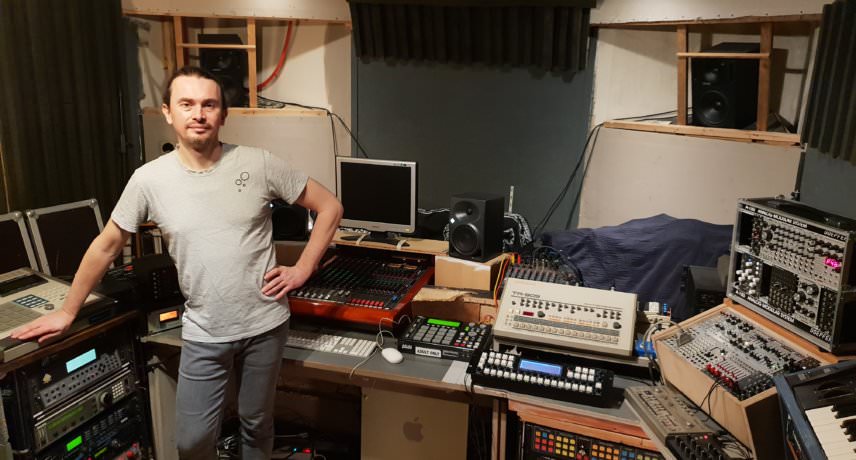


Chris Carrier – My Studio
I made my studio alone with a lot of rescued materials. It looks a little rough round the edges. At the end of the course I did at SAE Sound Engineers School where I had to report on the acoustics which helped me set up my studio, so I applied what I had learned to do. I tinkered with some materials that I’d found on the street, and I added acoustic foams which I’d bought at a market. At the time it took me several months. I admit that aesthetically, it’s not complete, but the bottom line for me is to have an effective studio and it is just that.
Related
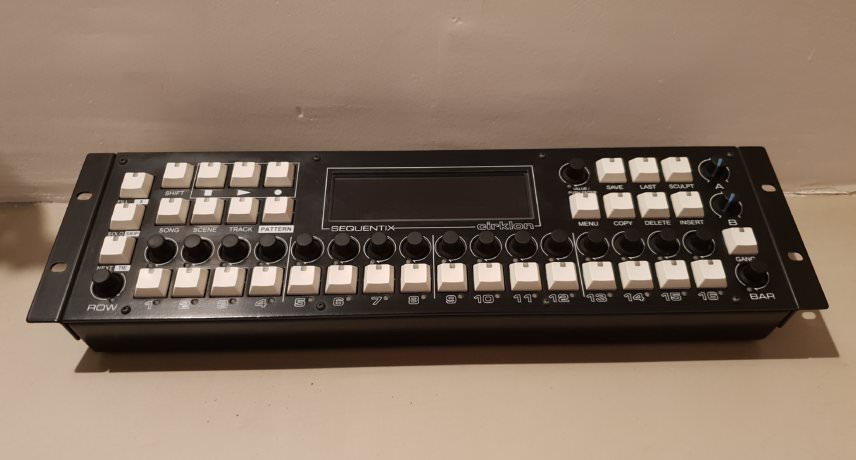


Cirklon Hardware Sequencer
I bought it second hand in 2017 after a crazy weekend that started with the birth of my second child and ended in Ibiza at Zoo Project. Upon returning from the island, I went to get him without having slept!
This machine is very difficult to obtain because you’ve got to wait one to two years until it’s complete. It’s like the Rolls Royce of sequencers. It’s on regular rotation right now as it’s perfect to make sequences with synthesizers, and it has several modes of sequence which is very interesting. I used it a lot on my electro collaboration with Le Loup on the Sound Carrier’s 10 th EP release, Red Eyes Trooper. This machine is complex; I still find new things all the time.
Related
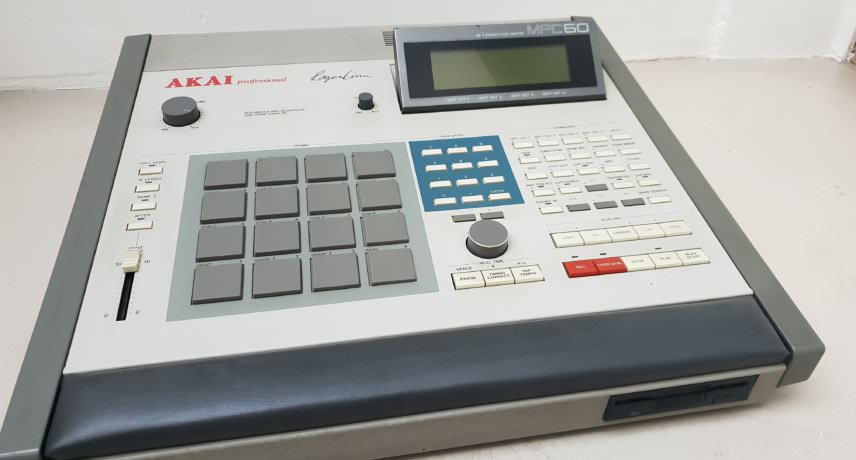


Akai MPC60
Beatbox and mythical sequence of hip-hop and house music. I had it in the ‘90s and then I traded it for a Roland TR-909, and then finally I bought another.
For me it is the machine that has the most groove, with the MPC 3000 and SQ10 external sequencers of the MPC60 all being designed by Mr. Roger Linn. The placement of the notes is random, which gives a special movement that is unequalled until now*. I’m lucky to have more than 200 floppy disks containing 12-bit samplers on all drum machines, which I had in a previous studio that was under a legendary second-hand shop called good sound in the district of Pigale in Paris. Here you could meet artists like Daft Punk, Air, Laurent Garnier and others.
* For a more detailed breakdown of the mystery around the swing and groove on the MPC range, check out this feature.
Related
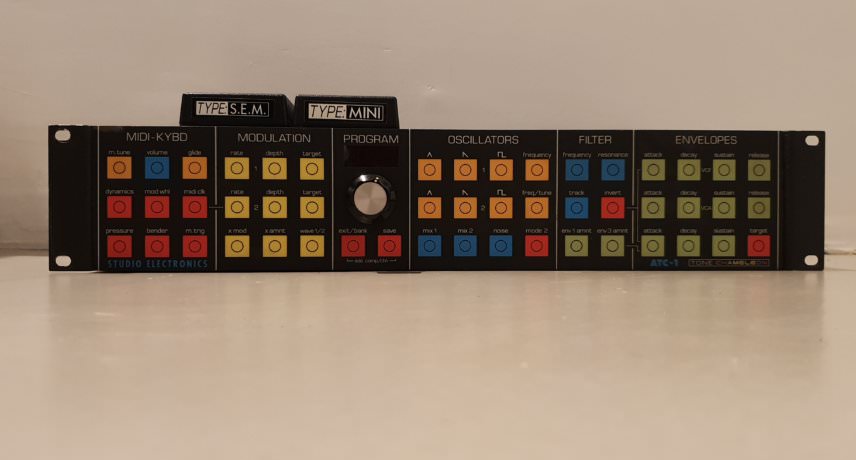


Studio Electronics ATC-1
My favourite expander synthetizer with cartridges and a monophonic synthesizer. I often use it for bass and for sequences in general and coupled with the Cirklon sequencer gives crazy results.
The majority of my recent tracks have been produced with this. The only two cartridges I have are the Minimoog and Oberheim SEM, which I bought in Tokyo in a store called Five G. In the future I will look to buy an ARP and Roland TB-303 second-hand. Guillaume La Tortue, my former partner and co-owner of the Chronobrain label, swore by this machine. Eventually I bought it in 2011 and it won’t be leaving the studio anytime soon…
Related
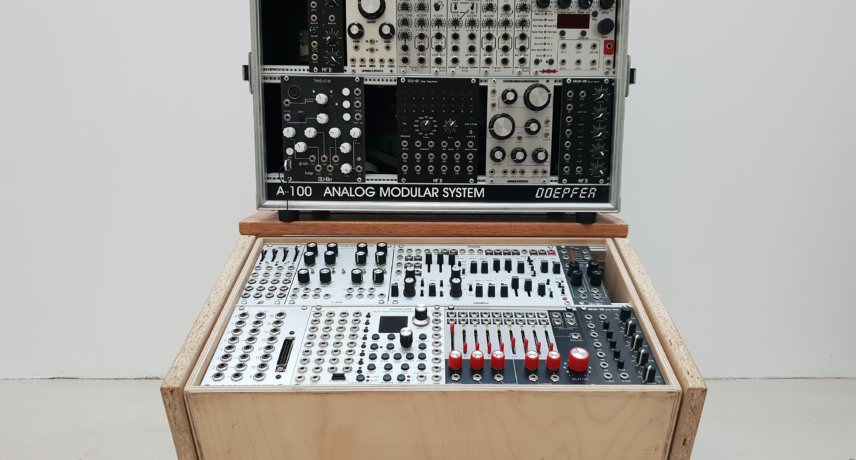


Modular Setup
A modular of four units: TipTop Audio, Pittsburgh, Jomox, Qu-bit, MFB, Intellijel, Rossum, Batumi, Verbos Electronics.
I buy and sell modules according to my desires. I’m not interested in large configuration modules because it takes too much time to configure them and in the end it’s the machine that makes 100% of the track. I like to keep a human side in my music, so half of my melody and arrangement is done with midi keyboards and I then record directly into my computer, and the other half are played by sequencer.
My last two purchases are the ASSIMIL8OR Multi-Timbral Phase Modulation Sampler module, created by E-mu pioneer David Rossum. I’ve used his samplers since the beginning, and I had to have his first modular creation. I waited two years to get my own when it finally became available at my favourite store, Modular Square.
The second is a Delay Verbos Electronic effect that has a lot of possibilities. I have used it on vocals with an LFO which sounds great. There’s so much positive feedback I could give on this if had more space. A warning with this is that modular synthesis is inherently addictive, and for that reason I try to distance myself after spending intensive periods with it.
Related
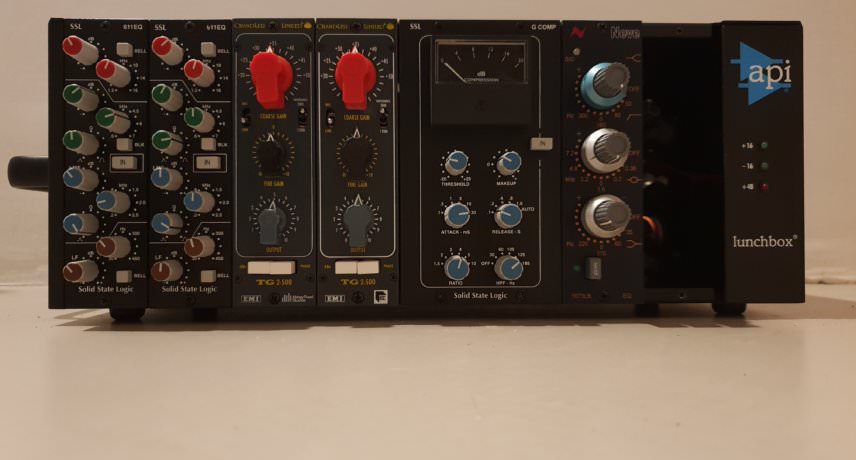


Rack
A Rack API 8 Slot with two SSL 611EQ, two Chandler Limited TG2, a Compressor SSL G Comp and for the moment one EQ Neve 1073LB. For the moment I still have a free slot for a second EQ Neve.
I use a lot of things to mix my own tracks and mix down tracks I produce for other artists. All these 500 models are incredible. In addition to my mixer, it’s perfect. It is easily transportable. The G. Comp is another must-have, in my opinion. I’ve never thought of having one without the accompanying table, which was really expensive a few years ago.
Related
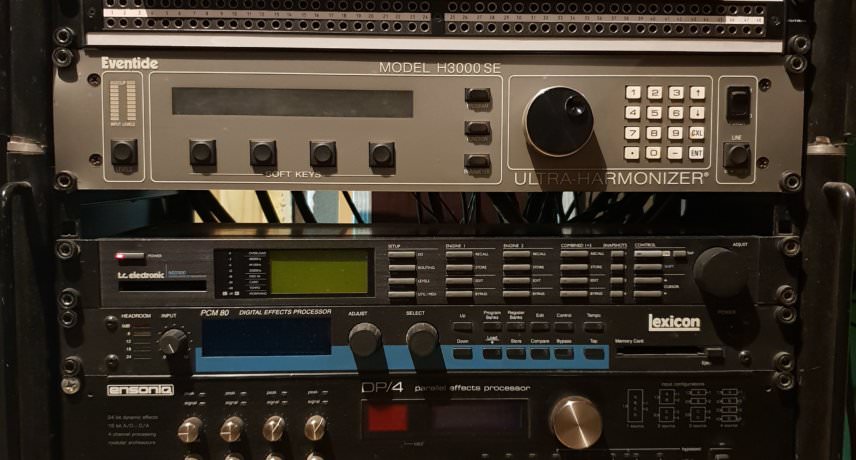


Eventide Model H3000-SE Ultra-Harmonizer
Multi effect and used to harmonize voices.
I’ve had it for 20 years and it still sounds so good. I use it for many things. I experimented with connecting a microphone and passing my voice in pitch shift. The reverb, chorus, flanger and delay sound very good – a big sound. The search for the program is easy thanks to its rotating wheel.
This is a timeless piece of studio gear; it never ages.
Related
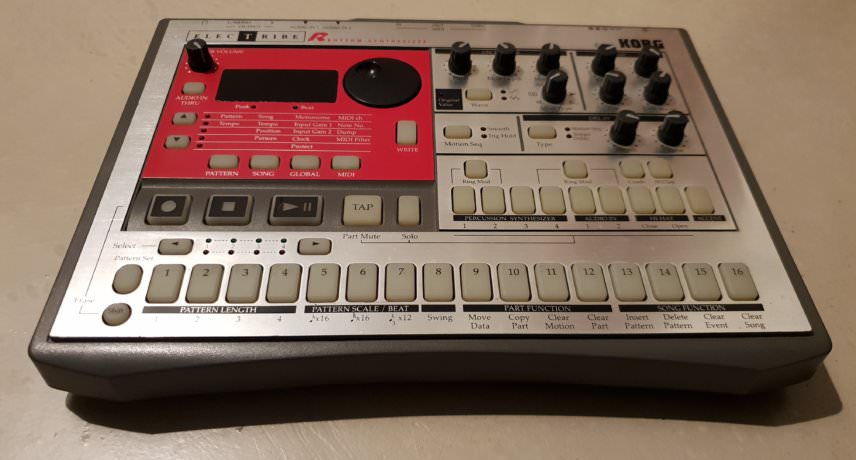


Korg ER-1
A small, cheap drum machine which I used to develop my Mr. Georget moniker.
It’s great and has two external inputs that I use a lot for voice sequencing from the machine, then add the delay and some other settings to get things sounding super weird. I used it on all my minimal Mr. Georget tracks. I use it live also as it’s easy to carry and good for jamming thanks to the speed of programming in Step mode and its onboard effects.
Related
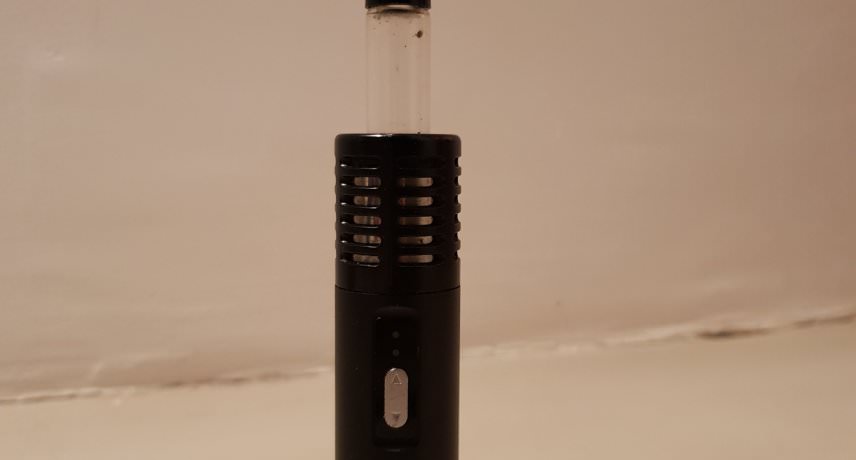


Arizer Air Vaporizer
To smoke the weed which helps me to stay for hours in the studio, I am lucky to have the only specialist shop for weed vaporizing in France in my street. Thanks to this device I stopped smoking and I’m doing much better. Some doctor’s advice is that its the best way to smoke weed.
With my friend Dan Ghenacia we even gave a track name ‘Vaporized’ which was released on Music For Freaks. This little gadget is a revolution for my lungs. Jah Jah 🙂
Related



Studio Brush
In a studio the number one enemy is dust.
It’s difficult to remove it between the mixer buttons and others, so the best solution is the brush. One day I went to a birthday at a friend’s house who was not a painter. He had a brush placed near these machines that were incredibly clean. I was intrigued and he told me that he used the brush – a very simple tip that I’d never thought of and now I always have one. Thanks again to him…!
Related



Chris Carrier – My Studio
I made my studio alone with a lot of rescued materials. It looks a little rough round the edges. At the end of the course I did at SAE Sound Engineers School where I had to report on the acoustics which helped me set up my studio, so I applied what I had learned to do. I tinkered with some materials that I’d found on the street, and I added acoustic foams which I’d bought at a market. At the time it took me several months. I admit that aesthetically, it’s not complete, but the bottom line for me is to have an effective studio and it is just that.
Related
Chris Carrier’s ‘Positive Distraction’ EP is out now on Kwench Records. Find him on Facebook.
Related
4th March, 2019
